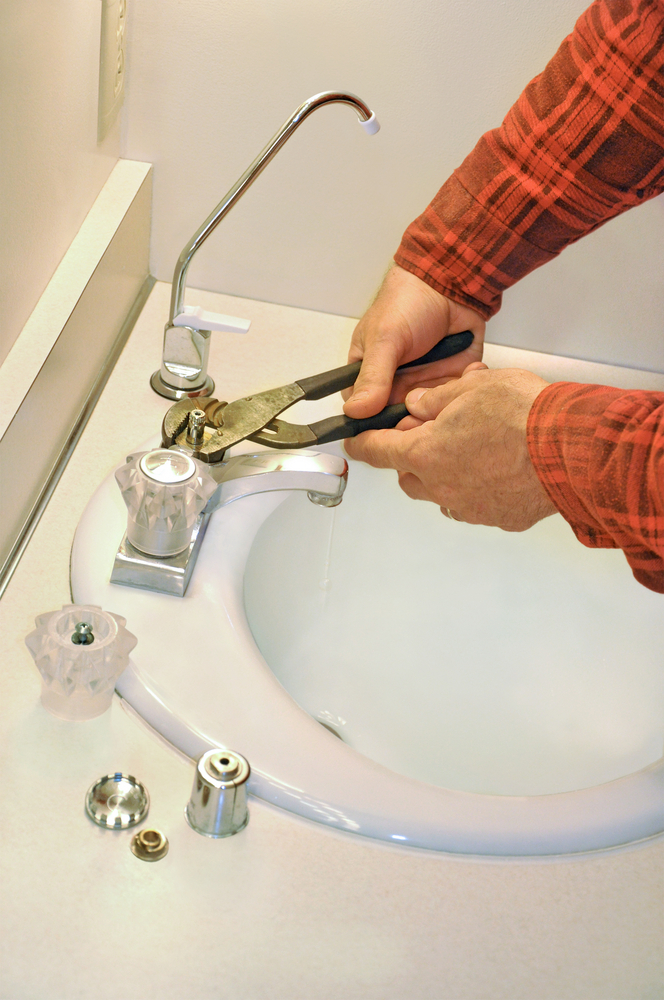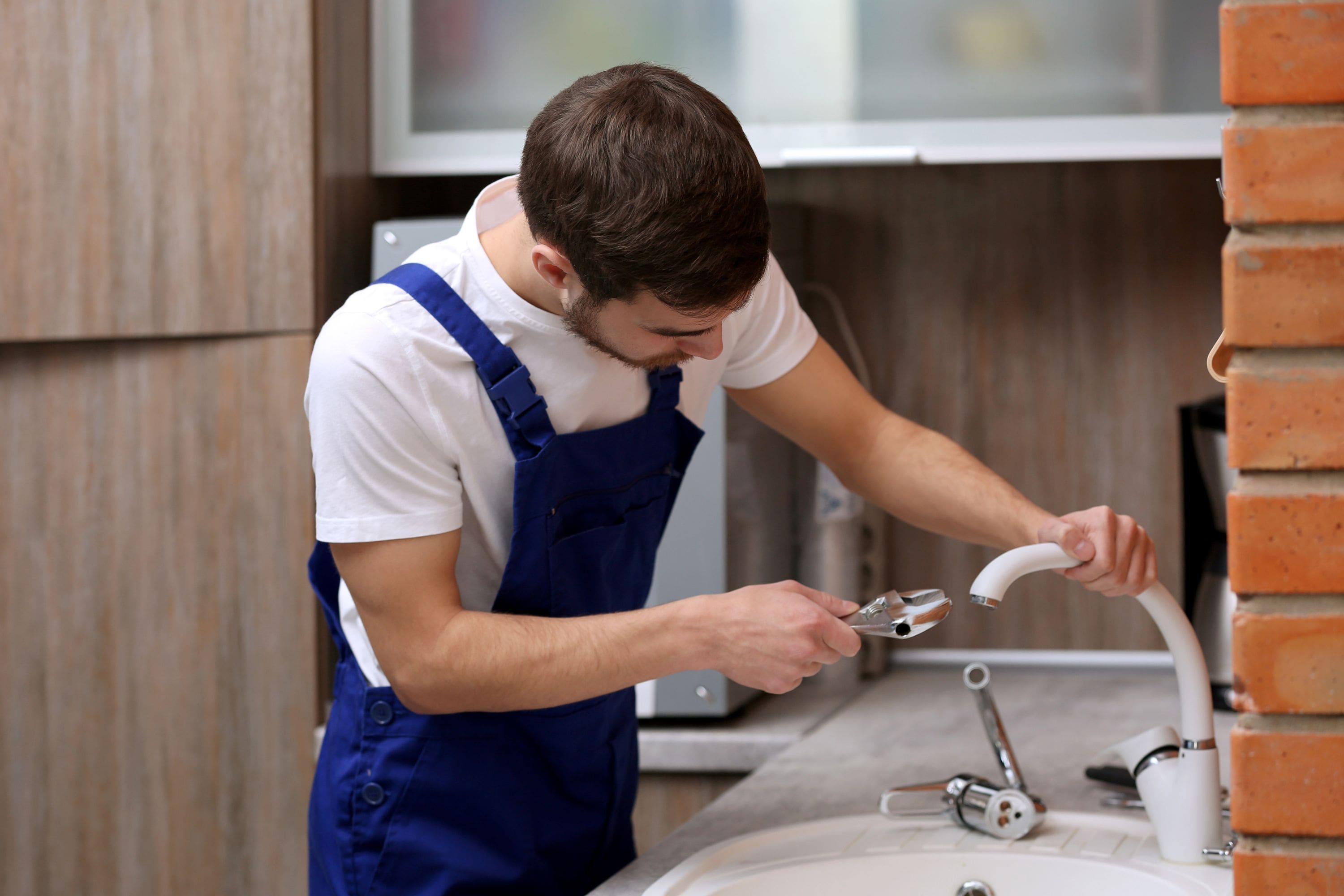How It's Essential to Rectify a Dripping Faucet
How It's Essential to Rectify a Dripping Faucet
Blog Article
Everyone may have their private views in relation to Why It's Important to Fix Leaky Faucets.

Trickling taps may appear like a small aggravation, yet their effect exceeds just the inconvenience of the sound. From wasting water to sustaining unneeded economic costs and health risks, ignoring a trickling tap can result in various effects. In this write-up, we'll explore why it's important to address this common house issue without delay and properly.
Waste of Water
Environmental Effect
Dripping faucets add considerably to water wastage. According to the Epa (EPA), a single tap dripping at one drip per second can waste greater than 3,000 gallons of water annually. This not only pressures water resources yet likewise influences environments and wildlife depending on them.
Step-by-Step Guide to Dealing With a Dripping Faucet
Devices Required
Prior to attempting to deal with a leaking tap, gather the essential tools, consisting of an adjustable wrench, screwdrivers, substitute parts (such as washers or cartridges), and plumber's tape.
Usual Faucet Issues and Their Solutions
Determine the type of faucet and the details issue triggering the drip. Common issues include worn-out washing machines, corroded valve seats, or defective O-rings. Describe manufacturer directions or online tutorials for step-by-step advice on repair work.
Financial Expenses
Increased Water Expenses
Past the ecological impact, leaking faucets can pump up water costs substantially. The collected wastefulness over time equates into greater energy expenses, which could have been prevented with prompt repair services.
Possible Home Damages
In addition, prolonged dripping can result in damage to components and surface areas bordering the tap. Water buildup can cause staining, deterioration, and also architectural concerns if left unattended, resulting in additional repair work expenses.
Health and wellness Worries
Mold And Mildew and Mold Development
The continuous presence of wetness from a leaking faucet creates an optimal atmosphere for mold and mildew and mold development. These fungi not only compromise indoor air quality but additionally posture wellness threats, specifically for people with breathing conditions or allergies.
Waterborne Diseases
Stationary water in trickling taps can end up being a breeding ground for bacteria and various other virus, boosting the risk of waterborne conditions. Contaminants such as Legionella bacteria flourish in stationary water, possibly causing major illnesses when consumed or inhaled.
Do it yourself vs. Specialist Repair
Benefits and drawbacks of Do It Yourself Repair Service
While some may attempt to take care of a trickling tap themselves, do it yourself repairs include their own collection of challenges. Without proper knowledge and tools, DIY attempts can intensify the problem or result in incomplete repairs, lengthening the issue.
Advantages of Employing a Professional Plumber
Working with a specialist plumber guarantees that the underlying cause of the dripping tap is resolved successfully. Plumbings possess the experience and devices to diagnose and repair tap issues successfully, saving time and lessening the risk of additional damage.
Ecological Responsibility
Private Payment to Conservation
Taking obligation for fixing leaking taps aligns with wider initiatives towards water preservation and environmental sustainability. Every individual's activities jointly make a significant impact on protecting priceless resources.
Sustainable Living Practices
By prioritizing punctual repairs and embracing water-saving behaviors, individuals contribute to sustainable living methods that benefit both present and future generations.
Preventive Measures
Normal Upkeep Tips
To prevent dripping faucets, do regular upkeep such as cleansing aerators, inspecting for leaks, and replacing worn-out parts quickly. In addition, consider installing water-saving devices or upgrading to much more effective fixtures.
Value of Prompt Fixes
Addressing dripping faucets as quickly as they're noticed protects against further water wastefulness and possible damages, inevitably conserving both water and cash over time.
Effect On Property Value
Assumption of Well-Maintained Property
Maintaining a residential property in good condition, including addressing maintenance concerns like trickling taps, boosts its viewed value and value among potential buyers or tenants.
Influence on Resale Value
Characteristics with well-maintained plumbing components, consisting of faucets, command greater resale worths in the real estate market. Addressing trickling taps can contribute to a favorable impact during building examinations and settlements.
Conclusion
Addressing a trickling faucet surpasses simple benefit; it's an important action toward preserving water, minimizing financial prices, and protecting health and building. Whether with do it yourself repair services or professional aid, taking action to deal with leaking taps is a small yet impactful means to promote accountable stewardship of sources and add to a healthier, much more lasting future.
How to Fix a Dripping or Leaky Faucet
A leaking faucet is one of the most common problems that homeowners encounter, but it being commonplace doesn’t make it any less annoying. The constant drip drip drip of a leaking bathtub faucet, showerhead, or sink tap can disturb your home’s serenity. Left neglected, a dripping faucet can also result in higher water bills and discoloration or mold growth in your sink or plumbing fixtures.
Fortunately, you don’t have to be a trained plumber to know how to stop a dripping faucet. With some basic tools, replacement parts, and a little patience, leaky faucet repair is a breeze. In this article, we’ll explain what causes dripping faucets and how you can fix them.
What Causes a Leaking Faucet?
Kitchen and bathroom faucets come in all manner of designs, but most involve some combination of valves, O-rings, seals, and washers. The O-ring is usually the weakest link, but any one of these pieces can wear down over time. Heat, moisture, temperature fluctuations, minerals, mold, and movement can contribute to warping and corrosion, breaking the watertight seal. This just comes with the territory of being a homeowner. Everything is always subject to wear and tear, and some component parts of your appliances and fixtures need to be replaced on occasion. At least replacement O-rings are cheap!
More rarely, dripping faucets can be a symptom of excessively high water pressure. Were this the case in your home, you would probably notice that the leak is not isolated to one faucet. Water pressure issues are harder to resolve on your own. We recommend contacting a professional plumber if you suspect your water pressure is too high.
How to Fix a Dripping Faucet
Pipe wrench or monkey wrench Allen wrench set Screwdrivers Old towel or rag Shut off the water.
Before you do anything, you need to turn off the water to keep from drenching your kitchen or bathroom. You should find a valve under the sink and against the wall. Once you’ve turned this valve, try turning the faucet on to confirm that the water source has been cut off.
If you can’t locate your local valve for the faucet you’re working on, you can always shut off the water to the house at the main valve. Of course, this will prohibit anyone from using the sinks, showers, or toilets while you’re working on the faucet that’s giving you trouble.
Plug or block the drain.
You’ll be disassembling the faucet and removing some small bits of hardware. Plug the drain with a stopper or rag to avoid the possibility of a small screw falling into your P-trap.
Take apart the faucet assembly.
There are several varieties of kitchen and bathroom faucets, each with its own manner of assembly. For detailed instructions on how to disassemble your faucet, you can refer to the fixture’s manual or contact the manufacturer. If you know whether you have a ball, disc, cartridge, or compression faucet, you can find detailed schematics online.
In general, you need to begin by removing the faucet handles. You might notice a small screw that you’ll need to remove with a screwdriver or Allen wrench. If you don’t see any visible securing hardware, it’s likely hidden under a decorative cap that can be unscrewed or popped off with flathead screwdriver.
Remove each piece methodically, consulting a schematic when necessary. Take notes or arrange the pieces in such a way to make it easier to correctly reassemble the faucet later.
Remove the cartridge.
Once you’ve removed the handles and securing hardware, you should be able to remove the valve cartridge or stem. Some cartridges will slide right out. Other faucet models will require you to loosen a nut with a pipe wrench before you can remove the valve stem.
Examine the exposed hardware.
With the cartridge or stem removed, inspect the component parts. Check the rubber O-rings for wear and tear. Also examine the seat washer for corrosion or other damage. These pieces are usually the responsible parties for a dripping faucet, but it’s worth inspecting the other component parts while you have the faucet disassembled.
Find replacement parts.
Once you’ve identified which faucet component has failed, find an identical replacement. Your local hardware store should have O-rings, seat washers, and other standard components in stock. If you have a luxury or uncommon faucet, you may have to contact the manufacturer for a replacement part.
It’s a good idea to take your old parts with you to the hardware store so you can compare them with the store’s inventory and be sure you’re purchasing the correct replacement.
Reassemble the faucet.
With your new parts in hand, reconstruct the faucet and handles. Don’t be tempted to overtighten screws or nuts. You might think this could create a better seal, but it can instead damage or bend a delicate part of the assembly and create a new problem for you.
Turn on the water and test the faucet.
The only thing left to do is test your work. Unplug the sink, turn the water back on, and try the faucet. Congratulate yourself on a job well done!
https://www.libertyhomeguard.com/how-to-fix-a-dripping-or-leaky-faucet/

I hope you enjoyed reading our post about Why Is It Important To Fix Your Leaking Tap/Faucet?. Thank you for taking a few minutes to read through our blog post. For those who enjoyed our post if you please make sure you remember to pass it around. We truly appreciate your readership.
Report this page